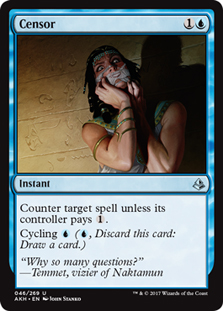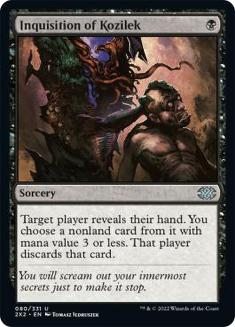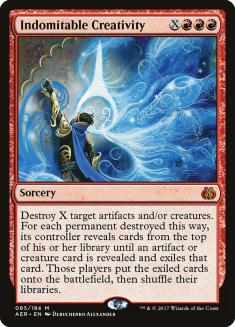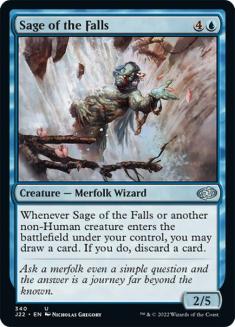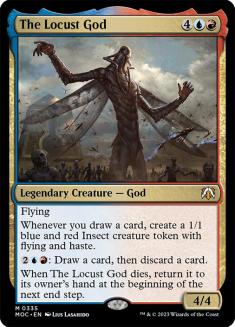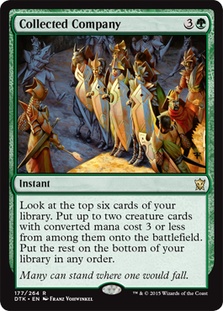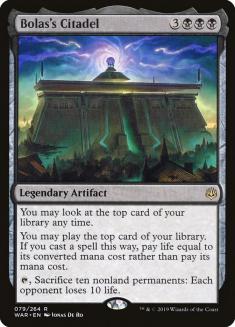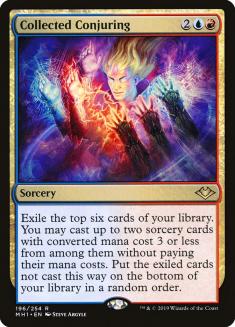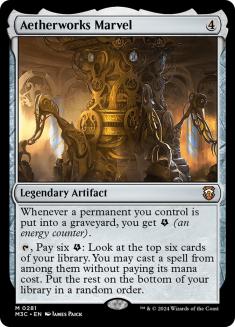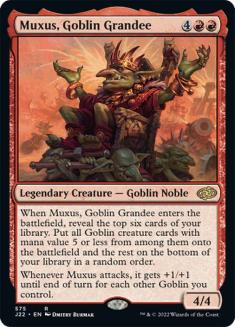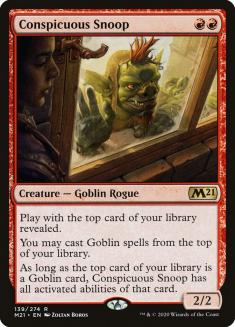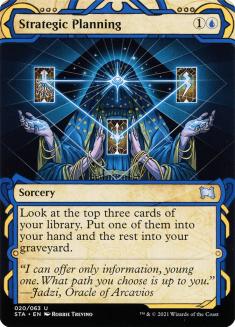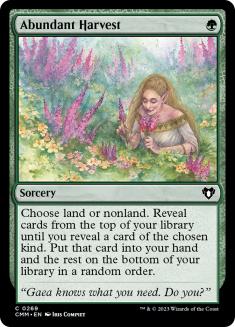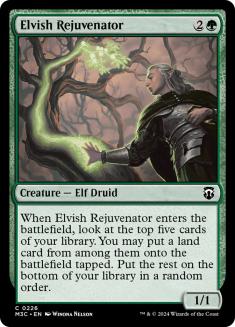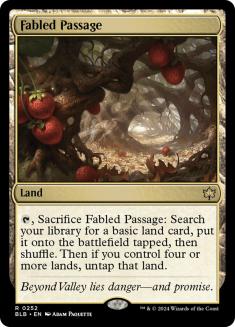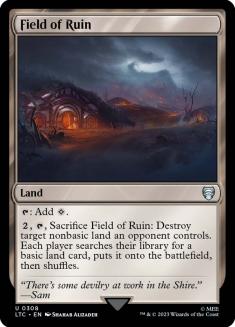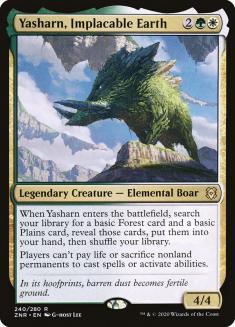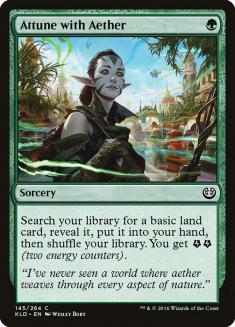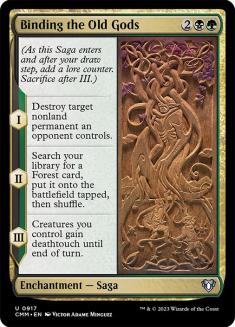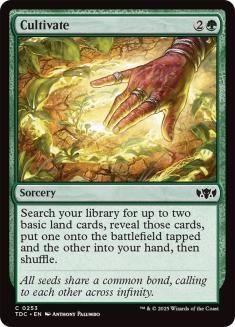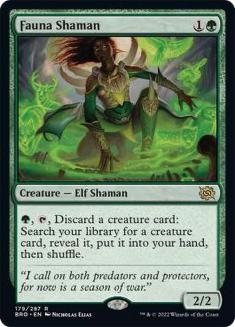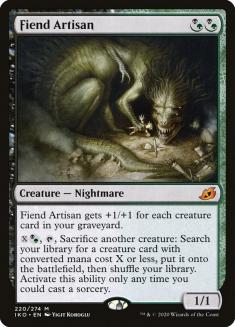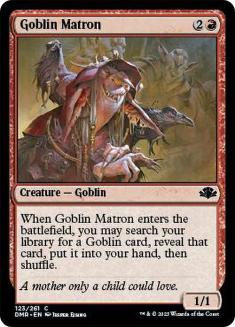If you’ve ever played or followed any Legacy content, you’ll know that Brainstorm is often lauded as one of the best — if not the single best — cards in the format. Now, we have the chance to play it in Historic. If a card is good enough to be in contention for the best card in Magic’s second-most-powerful format, it’s bound to make waves in Historic as well.
Will it be as good as it is in Legacy? No. Will it still be one of the best cards in Historic? Very likely.
When analysing Brainstorm, most people talk about its relationship with fetchlands like Polluted Delta. When you cast Brainstorm, you can throw away two unwanted cards, but only for a time — you’ll draw them back later on unless you find a way to get rid of them before that happens. With fetchlands, you have an easy, free way of doing that, which makes the card feel ridiculous. But the fact that it’s very good with fetchlands doesn’t mean it’s not still good without it. Here are some things to keep in mind when evaluating Brainstorm in Historic.
Its worst-case scenario is a good cantrip.
Brainstorm with a shuffle effect (or other form of manipulation) is an amazing card; Brainstorm without any of those is still a cantrip, and a pretty good one at that. You might have heard of the expression “Brainstorm-locked” — it means you Brainstorm and you put back two bad cards but then you don’t have a way to get rid of them, so you just have to draw bad cards in two consecutive turns — and, while that can feel pretty bad, it’s not really a thing because other cards wouldn’t deal with this problem either.
Imagine, for example, that instead of Brainstorm you have a Censor. You cycle it, you’re going to draw one card, and then over the next two turns you’ll have access to the same cards you did with Brainstorm, yet we don’t go around talking about being “Censor-locked.” The only difference here is that in the Brainstorm case, you know what’s coming, so it feels extra-bad.
“But PV, Censor isn’t a cantrip. It’s just a counterspell that you can cycle when things don’t go well.”
Yeah, I agree. Just like Brainstorm, it’s not a cantrip, it’s a powerful card selection tool that you can cycle when things don’t go well, except its “cycling” is actually much better than cycling.
It gives you the cards immediately.
Imagine your hand is two excess lands and the top three cards of your deck are good. If you have a Censor, you will find the first card, and then over the next two turns you’ll find the other two. If you have a Brainstorm, you will find the three good cards immediately and you can play them all together; even if you can’t play them all in the same turn, you get your choice of which to play first, and you know the other two are there. Even in this scenario in which you’re theoretically getting Brainstorm-locked, it’s still vastly outperforming a simple cantrip.
It protects you from discard spells.
Putting the cards on top of your library can help protect them versus discard spells. Given how much play Thoughtseize sees in the format (as well as Inquisition of Kozilek’s recent inclusion), this will be a highly relevant interaction for as long as Brainstorm is in the format. If they Thoughtseize you, you often have the choice of hiding your best card (and putting the worst card last so you can shuffle it away somehow) or hiding your best two cards, and both scenarios are pretty good.
It puts back unwanted cards.
We’ve all played combo decks where we don’t want to draw a specific spell, and Brainstorm is the most elegant way of getting rid of them. One example is the currently super-fringe Indomitable Creativity deck, where the idea is to get both Sage of the Falls and The Locust God on the battlefield at the same time.
One of the problems with this type of deck is that if you draw any of the pieces, your combo falls apart — you need to spend time casting and protecting them, and so on. With Brainstorm, you just put them back before you combo. This isn’t to say this combo will dominate Historic anytime soon, but it’s a potential application of the card to keep in mind.
It stacks the top of your deck.
Some cards — Collected Company; Bolas’s Citadel; Collected Conjuring; Aetherworks Marvel; Muxus, Goblin Grandee; Conspicuous Snoop — care about the top of your library, and with Brainstorm you can make sure that a certain card is there at the right time.
It doesn’t work only with search effects.
Shuffling is the easiest way to get rid of bad cards because it usually happens incidentally — you aren’t paying anything for the shuffling part; you’re just shuffling because you have to. Compare it to, for example, scrying. Scrying gets rid of the cards the same way, but you’re actually paying for scrying in some way or another, so it’s not just a freeroll. Still, scrying is a potential way of getting rid of bad cards, as is milling or using another effect that puts cards on the bottom of your library.
One card that’s sure to be best friends with Brainstorm is Strategic Planning — you can set it up so you mill an Arclight Phoenix while getting rid of an unwanted card in the process. Abundant Harvest is also an interesting new card that can basically speed through whatever card you don’t want to draw.
There are shuffle effects in Historic too!
Even though fetchlands are the best shuffle effects, they’re not the only ones. Fabled Passage is a commonly played Historic card and that’s already enough to create the scenario we’re looking for. Past that, we have Field of Ruin as another easy-to-play card, and then several fringe cards that shuffle and can be played in specific decks:
For all its power, Brainstorm is also an extremely hard card to play with. Give the same hand with a Brainstorm to ten different players and you might end up with ten different plays, including whether to cast the Brainstorm or not to begin with.
If I had to give you one tip to play the card correctly, it would be to have more patience than with other cantrips. With cards like Opt, Ponder, and Preordain, we often fire them off in the first possible opportunity. With Brainstorm, it usually pays off to wait a little and sculpt a scenario where you’re actually getting value from putting the cards back, whether that’s because you have a better idea of what you’re playing against or because you’re looking for a shuffle effect.
That said, it’s also often fine to just use Brainstorm as a cantrip if you have to — I feel like some people swing too far in the other direction and refuse to cast it unless they’re getting a lot of value, but the beauty of the card is that it can be cast in many different ways, so you should not impose this restriction on yourself.
So, what decks can we put Brainstorm in?
The first option is an Izzet Phoenix deck based on Arclight Phoenix. This is currently not a deck in Historic, but it almost certainly will be once Faithless Looting is unleashed in the format alongside Brainstorm.
Creatures (8)
Lands (20)
Spells (32)

This deck organically plays many of the interactions I mentioned. For example, you can use Brainstorm to set up a Strategic Planning that will either get rid of unwanted cards or put specific cards (Arclight Phoenix) in the graveyard. You can also use it to set up Collected Conjuring (particularly with See the Truth), and then Collected Conjuring can bring back an Arclight Phoenix on its own. This concept looks pretty strong when a grindy deck that’s unable to exile cards is the most popular (Jund Food), but you need to be wary of Grafdigger’s Cage.
The numbers on the list are pretty raw, but I suspect it will not take much time to find out which cards are the best and max on those. Regardless, I think every list will play four copies of Brainstorm.
Another option is Aetherworks Marvel:
Creatures (15)
Planeswalkers (2)
Lands (20)
Spells (23)

This deck also checks many of the “Brainstorm” boxes — it naturally plays shuffle effects (Fabled Passage and Attune with Aether) and it specifically has combo pieces that it wants to get rid of and put on top of its library. With Brainstorm in your deck, you’ll be hitting your key cards off Marvel much more often, not only because you can set it up but also because you can now play more of these cards in your deck to begin with, since you have a very easy way of getting rid of them.
Another deck that’s really going to welcome Brainstorm is Sultai Ramp. This is the sort of deck that naturally plays a lot of shuffle effects (since it’s ramping) and also has several cards that it really does not want to draw. Drawing Vorinclex, Monstrous Raider is a double dagger, since it means you have that card in your hand and also that you can’t search for it with Emergent Ultimatum. Brainstorm effortlessly fixes that.
Here’s a list based on Ian Birrel’s Kaldheim Championship deck:
Creatures (4)
Planeswalkers (1)
Lands (24)
Spells (31)

Or how about a straight control deck? This is the most “fair” use for a Brainstorm, but it can still be quite potent in these decks because the cards are usually split between “anti-aggro” and “anti-control.” Being able to get rid of a Baffling End or a Wrath of God against another control or combo deck; being able to get rid of a Dovin’s Veto or redundant Teferi, Hero of Dominaria versus an aggro deck; and being able to get rid of Grafdigger’s Cage against decks that don’t use the graveyard are all game-changing, making the prospects of playing these decks way more appealing.
A Magic adage goes, “There are no wrong threats, only wrong answers.” With Brainstorm and a way to shuffle your deck, there aren’t many wrong answers either.
Let’s take, for example, Andrew Cuneo’s Dimir Control deck from the Kaldheim Championship. This is a prime candidate for Brainstorm — it has reactive cards and is already playing Field of Ruin (four copies!) and Fabled Passage, as well as stuff like Search for Azcanta and Castle Vantress, both of which have some synergy with Brainstorm. Here’s how I would incorporate the card:
Creatures (3)
Planeswalkers (2)
Lands (27)
Spells (28)

You can, of course, play it in Azorius Control as well, but I think that might require a small change in the manabase to support some more shuffle effects (the Dimir deck is naturally interested in Fabled Passage because of Fatal Push, but the Azorius deck doesn’t usually play it). Here’s how I would update my Kaldheim Historic deck:
Creatures (1)
Planeswalkers (5)
Lands (26)
Spells (28)

All in all, these lists are just scratching the potential that Brainstorm has in Historic — I’m sure we’ll see it in most blue decks in the format in some way or another. If you aren’t an old-school player and have never had the pleasure to play with Brainstorm, you’re in for a treat — just make sure to not give up on it too soon, as it’s one of the hardest cards in the history of the game to master. When you do, however, you’ll never go back to a Brainstormless world.


